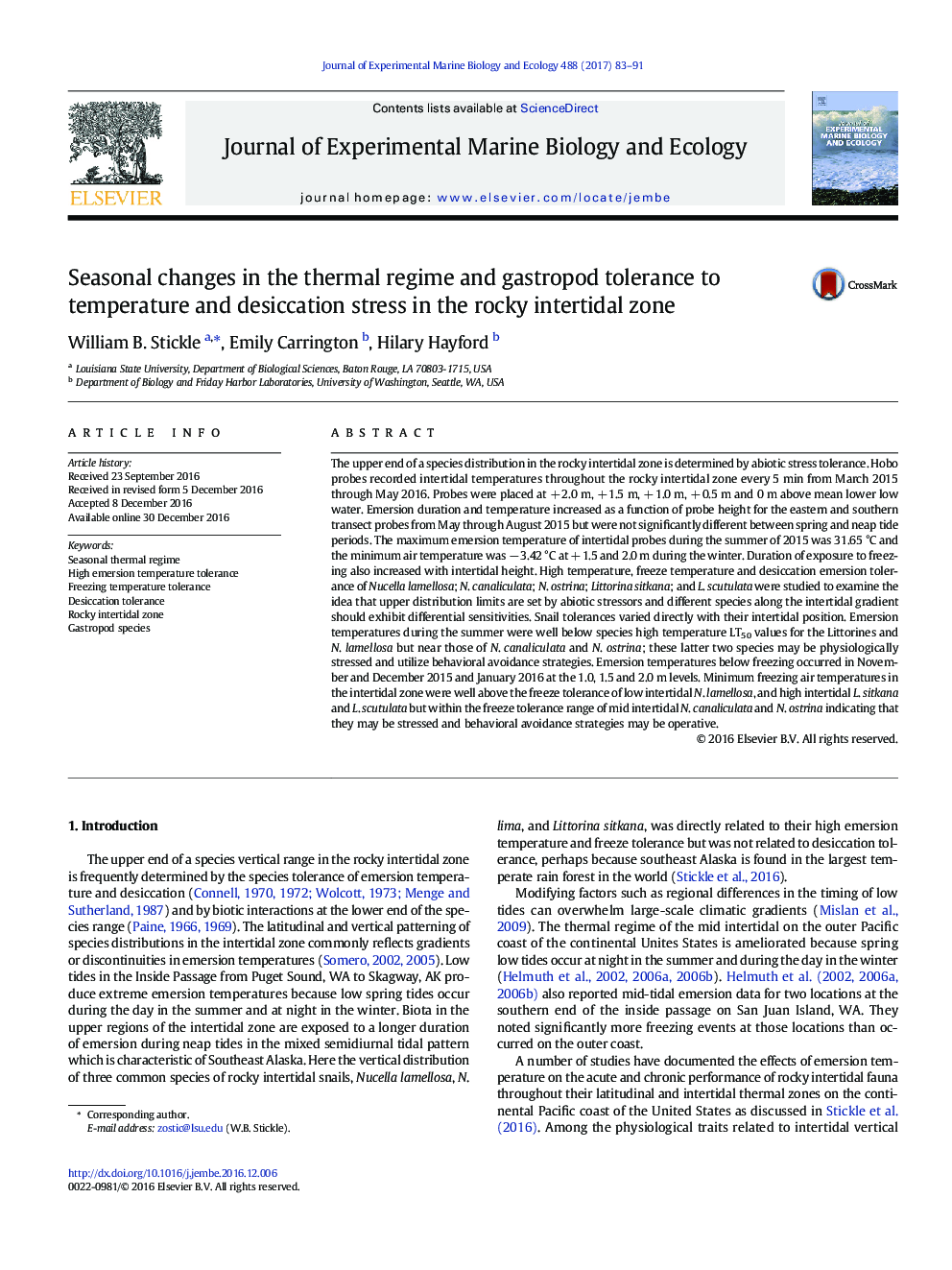| کد مقاله | کد نشریه | سال انتشار | مقاله انگلیسی | نسخه تمام متن |
|---|---|---|---|---|
| 5744566 | 1618387 | 2017 | 9 صفحه PDF | دانلود رایگان |
- Emersion temperature extremes increased in intensity and duration with intertidal height.
- Average daily temperature varied between 75 and 87% of the maximum monthly temperature in the summer.
- Desiccation tolerance varied with intertidal zonation of the five species of gastropods.
- High temperature tolerance increased as a function of zonation range.
- Freeze tolerance varied directly with their intertidal distribution and exhibited seasonal adaptation.
The upper end of a species distribution in the rocky intertidal zone is determined by abiotic stress tolerance. Hobo probes recorded intertidal temperatures throughout the rocky intertidal zone every 5 min from March 2015 through May 2016. Probes were placed at + 2.0 m, + 1.5 m, + 1.0 m, + 0.5 m and 0 m above mean lower low water. Emersion duration and temperature increased as a function of probe height for the eastern and southern transect probes from May through August 2015 but were not significantly different between spring and neap tide periods. The maximum emersion temperature of intertidal probes during the summer of 2015 was 31.65 °C and the minimum air temperature was â 3.42 °C at + 1.5 and 2.0 m during the winter. Duration of exposure to freezing also increased with intertidal height. High temperature, freeze temperature and desiccation emersion tolerance of Nucella lamellosa; N. canaliculata; N. ostrina; Littorina sitkana; and L. scutulata were studied to examine the idea that upper distribution limits are set by abiotic stressors and different species along the intertidal gradient should exhibit differential sensitivities. Snail tolerances varied directly with their intertidal position. Emersion temperatures during the summer were well below species high temperature LT50 values for the Littorines and N. lamellosa but near those of N. canaliculata and N. ostrina; these latter two species may be physiologically stressed and utilize behavioral avoidance strategies. Emersion temperatures below freezing occurred in November and December 2015 and January 2016 at the 1.0, 1.5 and 2.0 m levels. Minimum freezing air temperatures in the intertidal zone were well above the freeze tolerance of low intertidal N. lamellosa, and high intertidal L. sitkana and L. scutulata but within the freeze tolerance range of mid intertidal N. canaliculata and N. ostrina indicating that they may be stressed and behavioral avoidance strategies may be operative.
Journal: Journal of Experimental Marine Biology and Ecology - Volume 488, March 2017, Pages 83-91
